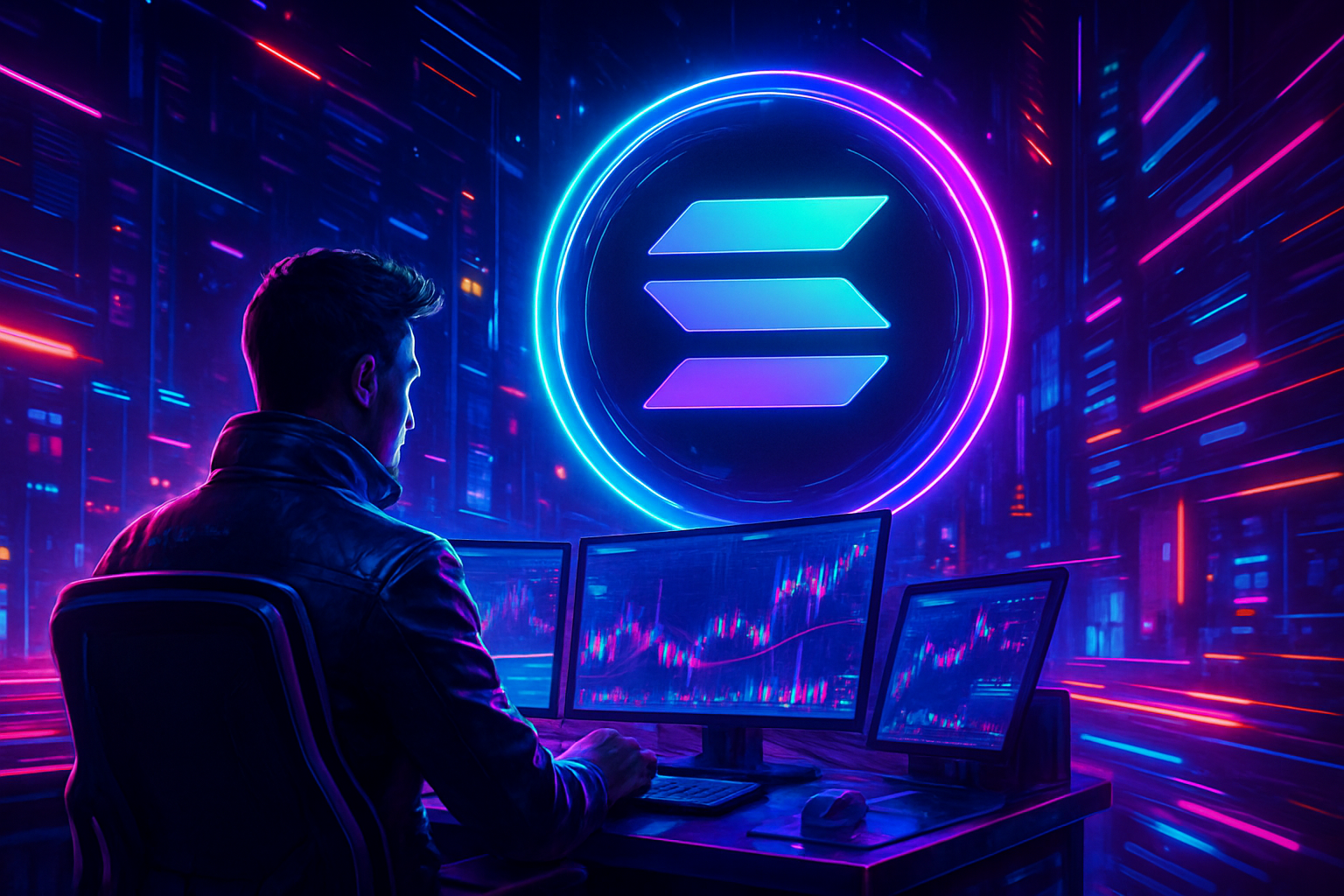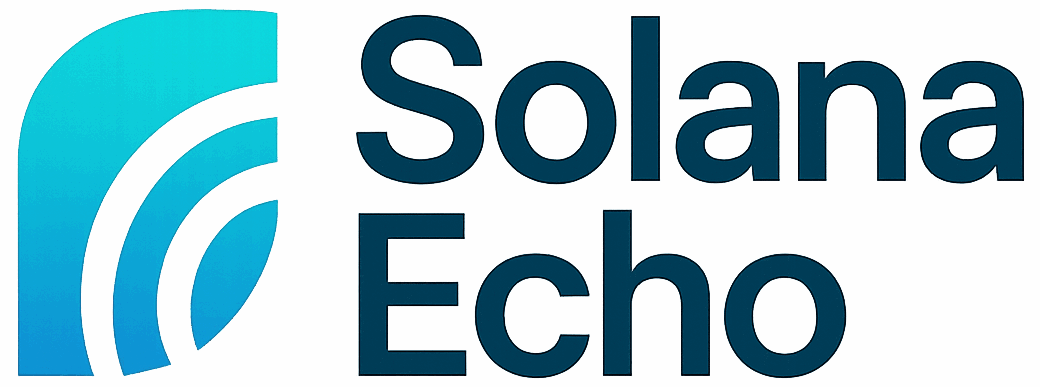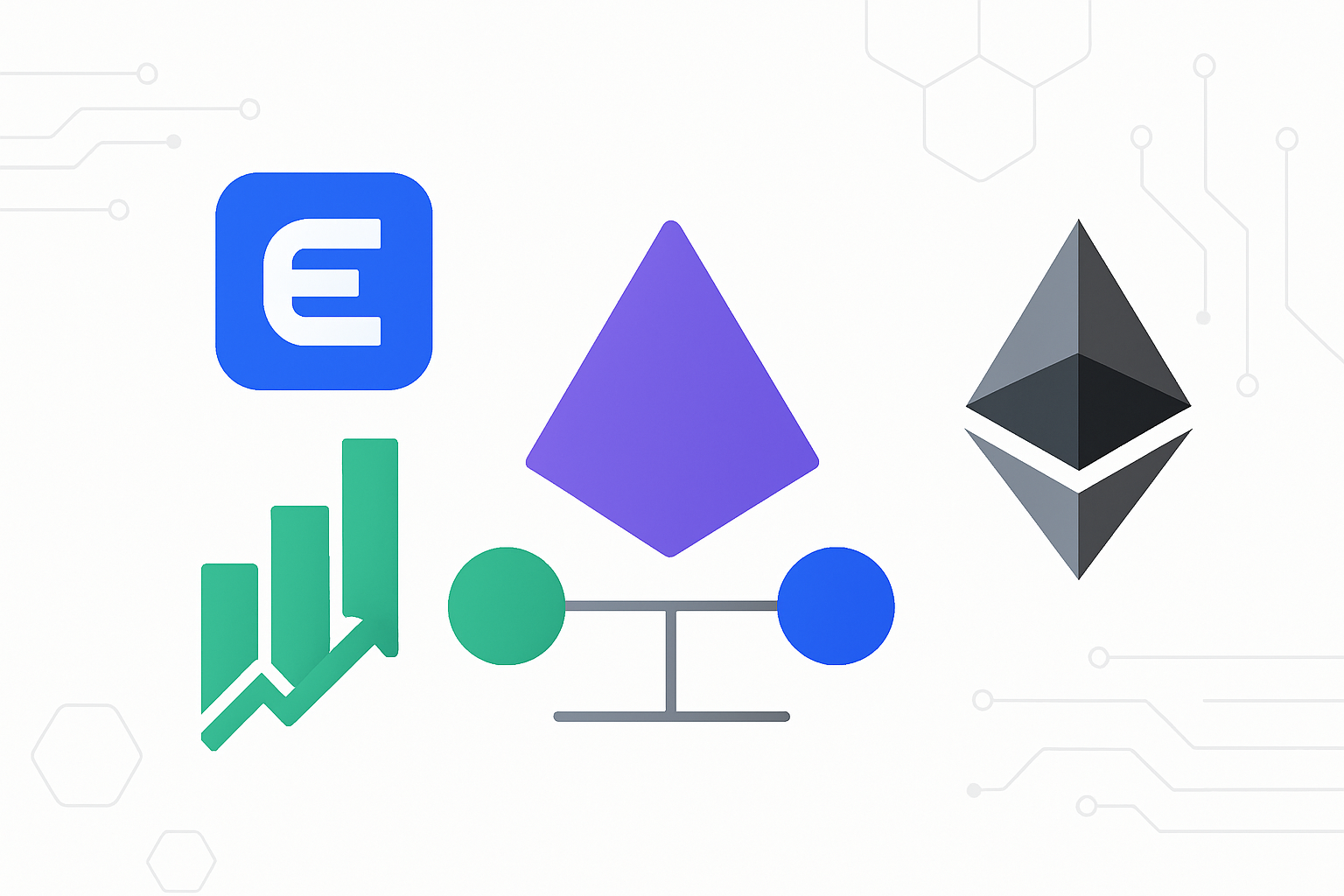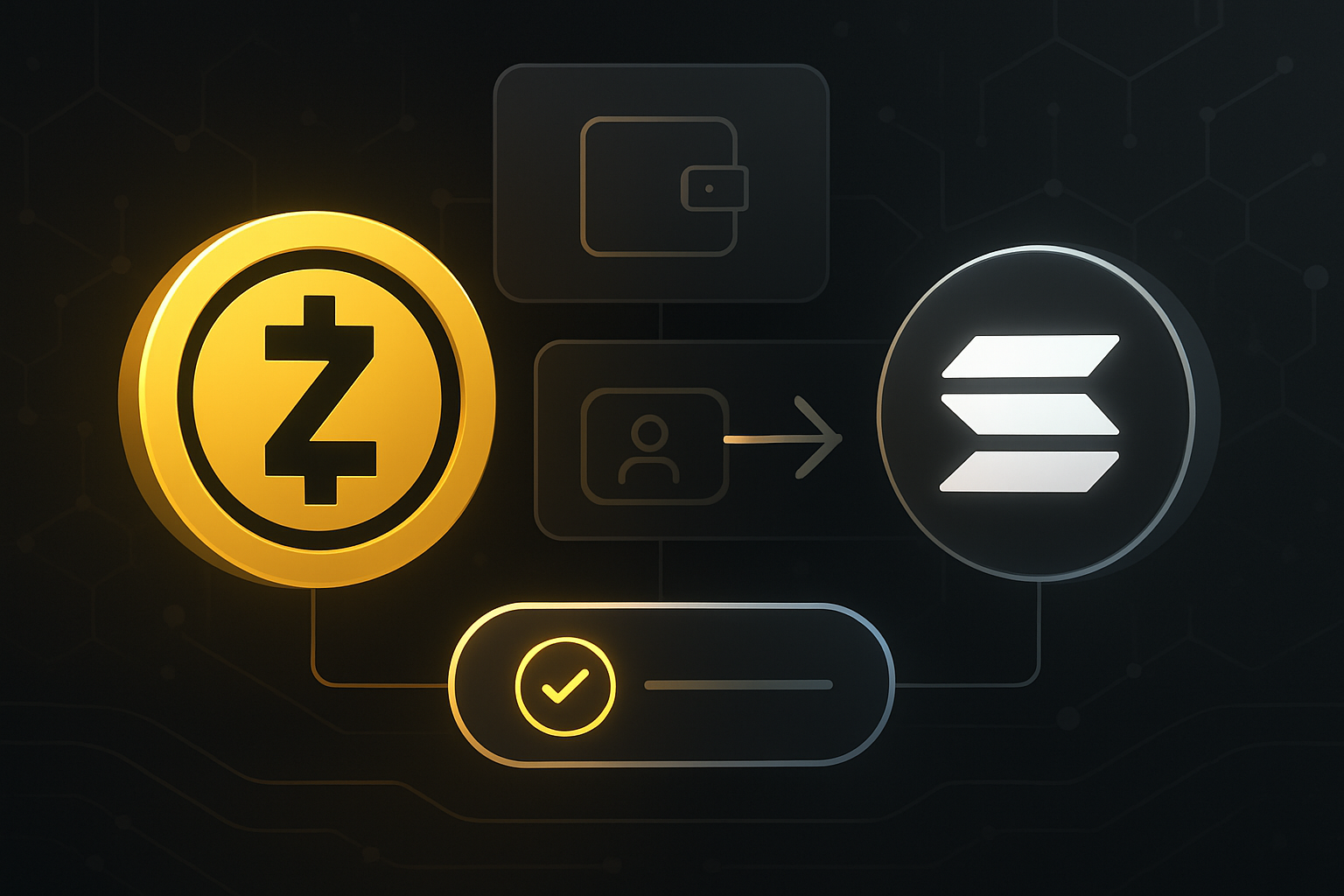
There was a time when blockchain technology was synonymous with volatility and retail speculation. In 2025, however, Solana has emerged as the unlikely architect of a new financial order, one that rivals the very structure of Wall Street. The numbers are impossible to ignore: institutional adoption is at an all-time high, with major players not only allocating capital but actively building on Solana’s rails. Where once Ethereum wore the crown for real-world asset (RWA) tokenization, Solana now leads the charge, propelled by its technical prowess and relentless ecosystem innovation.
Solana Institutional Adoption Hits New Highs
Institutional confidence in Solana is no longer just anecdotal. Publicly traded companies now hold over $591 million in SOL on their balance sheets. Upexi stands out, staking 1.9 million SOL, worth about $320.4 million at today’s price of $233.08 per SOL, for an 8% yield (source). This isn’t speculative dabbling; it’s a strategic allocation that echoes traditional treasury management but leverages Solana’s unique DeFi infrastructure.
The narrative is reinforced by the surge in Solana-focused financial products. Franklin Templeton’s ETF filing for a spot SOL product on the Cboe BZX Exchange marks an inflection point (source). The ETF will use Coinbase as its custodian, providing institutions with regulatory clarity and familiar operational rails, a crucial bridge between legacy finance and blockchain-native assets.
Tokenized Real-World Assets: From Concept to Capital Flows
The real revolution lies in RWA tokenization. From just $5 billion in 2022, tokenized assets across blockchains have soared to over $24 billion as of June 2025, with Solana capturing outsized market share (source). By mid-2025, Solana’s RWA ecosystem surpassed $656 million, growing at a blistering 260% year-to-date (source). The network now hosts over $13 billion in tokenized RWAs as of September, a staggering 350% year-over-year growth.
Key RWA Milestones on Solana (2022 – Q3 2025)
| Date / Period | Milestone | Details / Impact |
|---|---|---|
| 2022 | RWA Tokenization on Solana Begins | Solana starts supporting real-world asset (RWA) tokenization, contributing to the $5B global market. |
| 2023 | Rapid Growth in RWA Projects | Solana sees a surge in institutional-grade RWA projects, leveraging its high throughput and low fees. |
| Q1 2024 | Institutional Adoption Accelerates | Public companies amass over $591 million in SOL holdings; Upexi stakes 1.9M SOL (~$320.4 million at $233.08/SOL). |
| Q2 2024 | ETF Filing by Franklin Templeton | Franklin Templeton files for a Solana ETF to be listed on Cboe BZX Exchange, with Coinbase as custodian. |
| Q4 2024 | DeFi & RWA Ecosystem Expansion | Solana’s DeFi TVL surpasses $10B; liquid staking protocols and tokenized assets gain traction. |
| Q2 2025 | RWA Market Surges | Tokenized RWA market reaches $25B globally; Solana’s RWA ecosystem grows 260% YTD, surpassing $656M in tokenized assets. |
| July 2025 | Tokenized Asset Value Grows | Value of tokenized assets on Solana rises 140% YoY, expected to reach $418M; user interactions up 631%. |
| Q3 2025 | Technical Milestone | Solana processes 93M transactions daily (2.8B in April 2025); TVL hits $12.1B, staking rate at 67% ($82B). |
| September 2025 | $13B in Tokenized RWAs | Solana hosts over $13B in tokenized real-world assets, representing 350% YoY growth. |
| September 16, 2025 | Democratizing Access | Nasdaq highlights Solana’s role in democratizing finance with RWA tokenization. |
This momentum is not limited to abstract financial instruments; it extends to U. S. equities (via xStocks), NYSE-listed shares, tokenized treasuries (USYC by Circle), and even meme projects like Wall Street Pepe leveraging institutional-grade infrastructure (source). The practical upshot: 24/7 trading, global liquidity pools, and programmable finance, all underpinned by a blockchain that averages 93 million transactions daily.
Solana Versus Legacy Finance: Why Institutions Are Flocking In
The rationale for this migration from legacy rails to Solana boils down to three pillars:
- Speed: With nearly instantaneous settlement and throughput that dwarfs competitors, institutions can execute strategies without latency risk.
- Cost: Transaction fees remain minuscule, crucial for high-frequency trading desks and market makers operating at scale.
- Ecosystem Maturity: Liquid staking protocols have unlocked new forms of yield generation; TVL has reached $12.1 billion in Q3 2025, up 10% since earlier this year.
This combination doesn’t just rival traditional exchanges, it exceeds them in certain respects. For institutions accustomed to fragmented liquidity and opaque settlement cycles, Solana’s architecture offers both transparency and efficiency.
Solana (SOL) Price Prediction 2026-2031
Professional outlook based on institutional adoption, DeFi growth, and RWA tokenization trends as of Q4 2025. All prices in USD.
| Year | Minimum Price (Bearish) | Average Price (Base Case) | Maximum Price (Bullish) | Yearly % Change (Avg) | Key Scenario Insights |
|---|---|---|---|---|---|
| 2026 | $185.00 | $260.00 | $350.00 | +11.6% | Potential regulatory tightening may cause volatility; RWA adoption and ETF inflows continue but at a moderated pace. |
| 2027 | $210.00 | $320.00 | $480.00 | +23.1% | Further institutional ETF approvals and DeFi expansion drive growth; competition with Ethereum and emerging L2s intensifies. |
| 2028 | $260.00 | $390.00 | $600.00 | +21.9% | Tokenized asset market matures on Solana, with increased global regulatory clarity supporting higher valuations. |
| 2029 | $320.00 | $475.00 | $750.00 | +21.8% | Integration of AI and IoT data streams with Solana DeFi; enhanced scalability and interoperability attract new capital. |
| 2030 | $400.00 | $565.00 | $900.00 | +18.9% | Widespread adoption of tokenized stocks and global RWA settlements; macroeconomic cycles influence volatility. |
| 2031 | $440.00 | $630.00 | $1,050.00 | +11.5% | Solana becomes a leading platform for financial products; possible regulatory headwinds balanced by mainstream use cases. |
Price Prediction Summary
Solana is poised for steady growth through 2031, driven by institutional adoption, the rapid expansion of real-world asset tokenization, and innovative DeFi products. While periods of volatility are expected due to market cycles and regulatory uncertainty, the overall trend suggests increasing price stability and higher valuations as the network cements its role in the global financial landscape.
Key Factors Affecting Solana Price
- Continued institutional investment and ETF product launches.
- Expansion of tokenized real-world assets (RWAs) and DeFi TVL growth.
- Solana’s technical leadership in scalability and low transaction costs.
- Potential regulatory developments in the US, EU, and Asia.
- Competition from Ethereum, Layer-2 solutions, and alternative blockchains.
- Macro-economic cycles affecting investor risk appetite.
- Mainstream adoption of tokenized stocks, treasuries, and other financial products on Solana.
Disclaimer: Cryptocurrency price predictions are speculative and based on current market analysis.
Actual prices may vary significantly due to market volatility, regulatory changes, and other factors.
Always do your own research before making investment decisions.
The Road Ahead: Building the Next Wall Street?
If current trends persist, and there is little evidence they will reverse, Solana could well become the backbone of global digital capital markets by decade’s end. The convergence of regulated ETFs, tokenized RWAs, stablecoin innovations at all-time highs, and relentless technical improvement has created a flywheel effect rarely seen outside historic bull markets or technological revolutions.
Yet, this transformation is not merely quantitative. The qualitative leap in Solana’s financial ecosystem in 2025 is visible in the caliber of projects and partnerships emerging on-chain. Circle’s expansion of USYC tokenized treasuries to Solana has given institutional treasurers a liquid, programmable alternative to legacy money market funds. Meanwhile, meme-driven assets like Wall Street Pepe are no longer dismissed as crypto oddities but are instead leveraging Solana’s rails for global distribution and compliance-oriented DeFi primitives. This blurring of lines between traditional finance and crypto-native innovation is precisely what sets Solana apart from its rivals.

Perhaps most telling is the surge in user interactions with tokenized real-world assets. According to recent data, there has been a 631% increase in RWA-related activity on Solana since the start of the year. These are not just speculative flows; they reflect new forms of collateralization, lending, and structured products previously inaccessible outside institutional circles. The democratization of these tools, enabling anyone with an internet connection to access instruments once reserved for Wall Street insiders, signals a tectonic shift in capital formation.
Leading Institutional-Grade RWA Protocols on Solana
-

Circle USYC: Circle’s USYC tokenized treasury product brings U.S. Treasury yields to Solana, enabling institutions to access on-chain, fully backed, and regulated real-world assets with high liquidity. Circle’s expansion of USYC to Solana in 2025 marked a major milestone for institutional adoption of tokenized treasuries.
-

xStocks: xStocks enables tokenization of U.S. equities on Solana, allowing 24/7 trading and DeFi integrations for institutional investors. The protocol bridges traditional stock markets with Solana’s high-speed blockchain, driving RWA growth and accessibility.
-

Maple Finance: Maple Finance’s Solana deployment offers institutional lending and credit infrastructure, supporting tokenized real-world assets such as private credit and treasury bills. Maple’s presence on Solana has facilitated institutional-grade lending pools and transparent on-chain credit markets.
-

Credix: Credix provides tokenized private credit markets on Solana, connecting institutional investors with real-world assets like SME loans and receivables. Its platform enables efficient capital allocation and risk management for large-scale investors.
-

Realio Network: Realio Network leverages Solana for compliant tokenization of real estate and private equity, offering institutional investors exposure to traditionally illiquid assets. Realio’s integration with Solana enhances asset transferability and settlement speed.
Technical advancements continue apace. With an average of 93 million transactions processed daily and transaction fees measured in fractions of a cent, Solana’s throughput advantage is now self-reinforcing. Every new protocol or asset class that launches on-chain further cements its status as the preferred venue for digital capital markets. This network effect, coupled with robust developer activity and sustained investor interest, suggests that Solana’s ascent is far from over.
“Patience is profit. ” In a world obsessed with instant gratification, Solana’s steady accumulation of institutional trust stands as proof that long-term vision still pays dividends.
What Could Challenge the New Order?
No paradigm shift comes without friction. Regulatory clarity remains patchy in several jurisdictions, especially as tokenized equities and treasuries gain traction. Institutions will continue to demand rigorous compliance frameworks, something Solana-based protocols are racing to provide through partnerships with custodians like Coinbase and initiatives around on-chain KYC/AML solutions.
There is also the ever-present risk of technical setbacks or security lapses inherent to any rapidly evolving technology stack. However, recent upgrades have improved network stability and resilience under load, a critical factor given the scale at which institutions now operate.
The numbers speak volumes: $233.08 per SOL, over $591 million in public company holdings, $12.1 billion TVL, and more than $13 billion in tokenized RWAs as we approach Q4 2025. But beyond these figures lies something even more important, the emergence of an open, programmable financial system where value moves at internet speed and opportunity is no longer gated by geography or legacy infrastructure.




